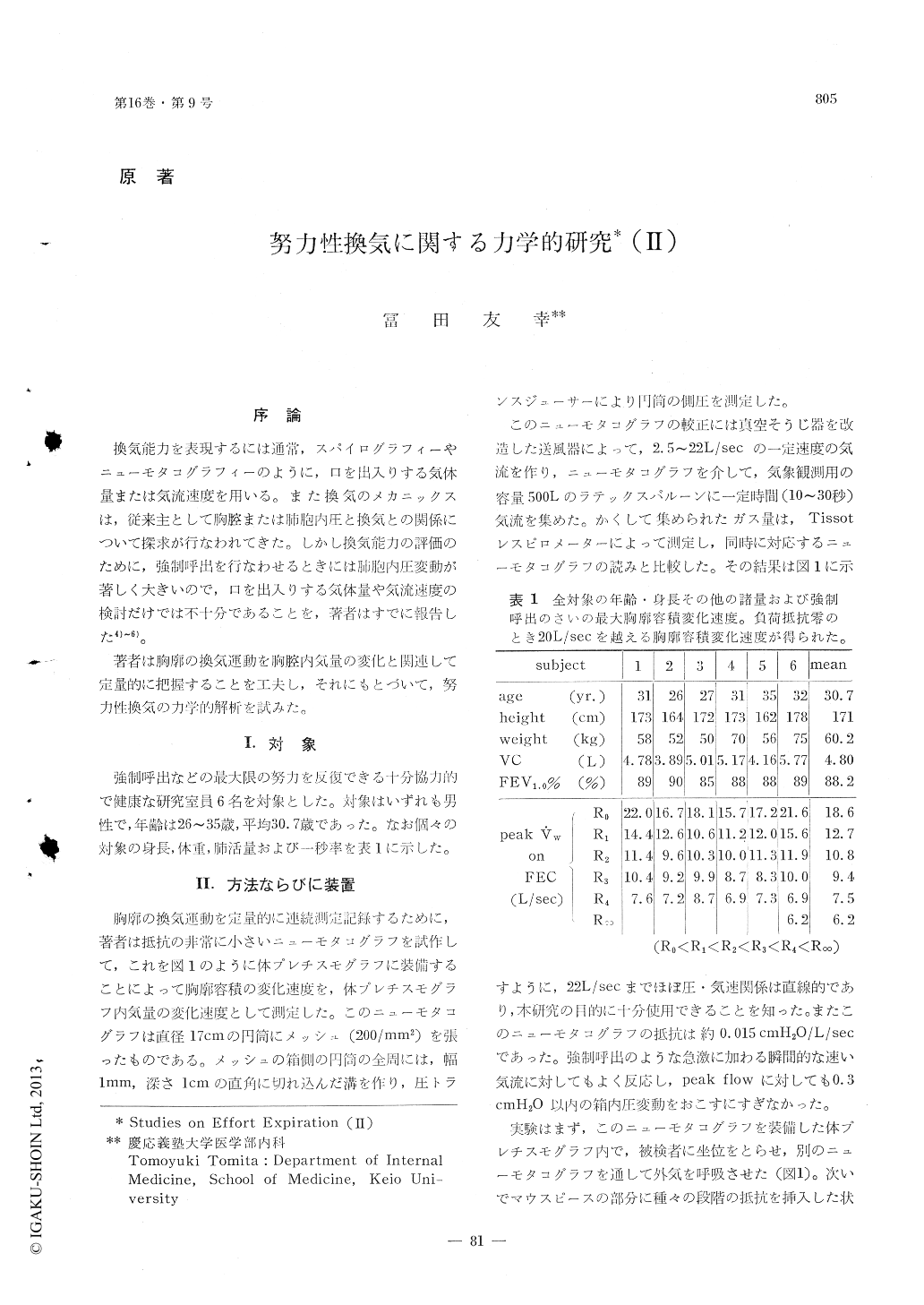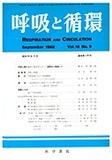Japanese
English
- 有料閲覧
- Abstract 文献概要
- 1ページ目 Look Inside
序論
換気能力を表現するには通常,スパイログラフィーやニューモタコグラフィーのように,口を出入りする気体量または気流速度を用いる。また換気のメカニックスは,従来主として胸腔または肺胞内圧と換気との関係について探求が行なわれてきた。しかし換気能力の評価のために,強制呼出を行なわせるときには肺胞内圧変動が著しく大ぎいので,口を出入りする気体量や気流速度の検討だけでは不十分であることを,著者はすでに報告した4)〜6)。
著者は胸廓の換気運動を胸腔内気量の変化と関連して定量的に把握することを工夫し,それにもとづいて,努力性換気の力学的解析を試みた。
To conduct the three dimensional analysis of the dynamics of the effort expiration with regard to the rate of volume displacement of the chest wall, the lung volumes as well as to the alveolar pressure some experimen-tal measurements were done on the well-trained healthy young subjects by use of the specially designed pneumotachograph attach-ed to the body-plethysmograph.
The maximal rate of volume change of the chest wall on forced expiration exceeded 20 L/sec in some cases. The mean was 18.6 L/sec.
The peak alveolar pressure, ranged bet-ween 125 and 190 cmH2O, was found higher when larger airway resistance was applied. The rate of work, calculated as the pro-duct of alveolar pressure and the rate of volume change of chest wall, was found 120-170 watt in these subjects.
On the initial stage of the forced expira-tion from the maximal inspiratory position the alveolar pressure was not the limitting factor to determine the rate of volume ch-ange of the chest wall. In this early stage of forced expiration the "tension-velocity relationship" seemed not applicable.

Copyright © 1968, Igaku-Shoin Ltd. All rights reserved.


